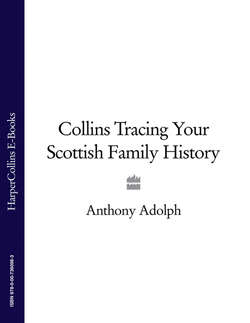Читать книгу Collins Tracing Your Scottish Family History - Ryan Tubridy, Anthony Adolph - Страница 44
Finding Cnocaneach
ОглавлениеI first encountered the name Cnocaneach, Sutherland, in Malcolm Bangor-Jones’s The Assynt Clearances (The Assynt Press, 2001), which brings together information from sheriff or local court papers and the Sutherland estate papers. We had just bought the booklet in Achins’ book-cum-coffee shop at Inverkirkaig, and were scrutinizing it for more information about the MacLeods in Badnaban. This is what leapt out: ‘Cnocaneach and Badnaban were held [from the Sutherland Estate] by George Ross from Easter Ross who went to work for the Custom House in Ullapool. He had removed people from Cnocaneach prior to 1812. The MacLeods, who were removed when the lands became part of Culag sheepfarm in 1812, accepted holdings in Baddidarrach but then changed their minds.
| Cleared | Head of Household | Destination |
|---|---|---|
| 1812 | Alexander MacLeod | Langwell sheepfarm, Coigach |
| 1812 | Angus MacLeod (son of the above) | Badnaban |
| Roderick Ross | Bad a’ Ghrianan’ |
There were several MacLeod families in Badnaban, and Angus’s was only one, but it was tremendously exciting to have confirmation of exactly where any of them came from, and to discover they had come to Badnaban due to the notorious Highland Clearances (see pp. 147-50).
But where was Cnocaneach? Five minutes scrutinizing the Ordnance Survey’s Explorer Series map of the area revealed ‘Cnoc Innis nan Each’ just next to Badnaban – but that was a red herring: the correct ‘Cnocaneach’ (the hill of the horse’) was a mile and a half away to the east (about 2 kilometers).
An hour later found us panting up the track towards the hollow outlines of buildings indicated by the map. At last, we saw amidst the bracken a ruined dwelling! And then, just round a bend in the track, a derelict house, rebuilt in 1870, but on the ruins of an older one. Round about, various walls indicated where yards and paddocks had been. The MacLeods and the Rosses had been thrown out of Cnocaneach in 1812, and here were their two ruined homes.
It would have been a tough place to live, but not nearly so much as Badnaban on the coast. The MacLeods probably went down to Badnaban in subdued silence, and as we walked back down to the loch, we felt an immense sadness, knowing that the MacLeods had trudged the same path in 1812, carrying all their worldly possessions, leaving their precious crops to be eaten by the landlord’s sheep, and with a very uncertain future ahead of them.
This map, showing both Badnaban and Cnocaneach, was found through a search under ‘Assynt’ at www.nls.uk/maps. The maps are accompanied by Hume’s comments on the farms. Cnocaneach was described as ‘most beautifully situated upon the East side of the Hill of that name, the North and West Sides of which Hills are cover’d with fine full grown Trees, consisting of Oak, Ash, Birch, &c’. Of Badnaban, on the other hand, Hume wrote ‘this small Farm on the South side of Loch Inver at the March with Cullack, is only a subsett, belonging to InverChirkag: it is situate near a Creak of the sea, where Boats land safely, and is occupied by two or three people who complain much of the small priviledge allowed them by their Landlord of the Hill pasture’. The land by the farmhouses was ‘pretty much broke & interjected with Rocks and Stony Baulks’. It was to Badnaban, in full knowledge of Hume’s comments, that people from Cnocaneach were cleared in 1812. From John Hume’s Survey of Assynt, 1774 (courtesy of Lord Strathnaver).
Mary Ann White, wife of Ally Alistair MacLeod, on the family croft at Badnaban with her grandson Murdo.
The impressive tombs in the Glasgow Necropolis have many elaborate memorial inscriptions of interest to family history researchers.
